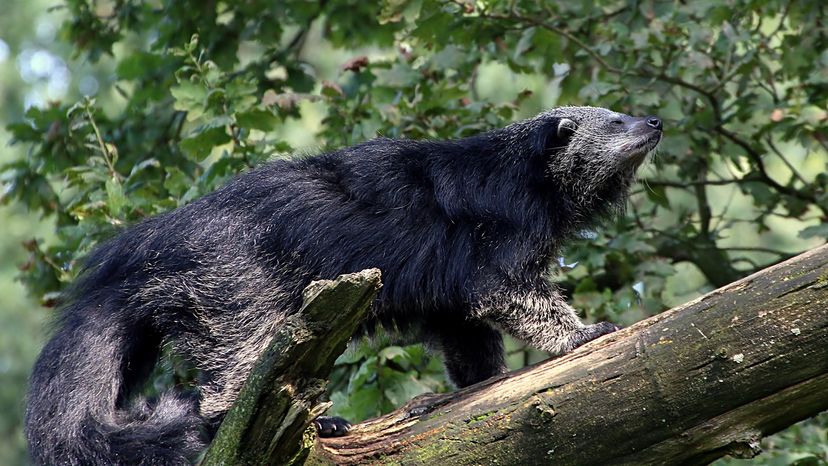
Neither a bear nor a cat, the Southeast Asian bearcat is actually a viverrid (family Viverridae). Its closest relatives are other small carnivorous mammals like civets.
Advertisement

Neither a bear nor a cat, the Southeast Asian bearcat is actually a viverrid (family Viverridae). Its closest relatives are other small carnivorous mammals like civets.
Advertisement
The bearcat (sometimes spelled "bear cat") also goes by the name of binturong (Arctictis binturong). The 20- to 31-pound (9- to 14-kilogram) species of viverrid is native to Southeast Asia.
Although it resembles a bear or a cat in its appearance, with its long, bushy tail (22 to 35 inches or 55 to 90 centimeters) and rounded eats, the bearcat is neither.
Advertisement
Its bushy tail may resemble a cat's, but it's actually fully prehensile (able to grasp objects). This unique animal is a forest-dweller and uses its prehensile tail to climb tree branches.
Like other carnivores (order Carnivora), bearcats use scent signaling to communicate. But bearcats give off an odor that's more like popcorn than pee; read more about why binturong urine smells like hot popcorn.
The binturong's preferred food is fruit (figs in particular), but this omnivore also eats birds, insects and the eggs of small animals.
Advertisement
Binturongs live primarily in trees but must descend to the ground in order to move from one tree to the next as they are too large to leap between branches or trunks.
Binturongs are rare but have been found throughout Southeast Asia, including in Borneo, Indonesia, Malaysia, the Philippines and Vietnam. Nine different subspecies of binturongs have been proposed, but much of this secretive animal's ecology remains a mystery.
Advertisement
Binturongs can survive in captivity and live in zoos around the world.
International Union for Conservation of Nature (IUCN) Red List declared binturongs vulnerable in 2008. Habitat loss due to conversion of bearcat-supporting forests into palm oil plantations is the biggest threat in the southern part of the bearcat's range.
"Oil palm trees often grow best in places where rainforests were," Jeff Conant, director of Friends of the Earth's international forests program, told HowStuffWorks. "It's definitely a factor in deforestation."
Advertisement
Hunting is the main threat in the northern part of the binturong's range. People hunt binturongs for food, medicine and to keep as pets.
Please copy/paste the following text to properly cite this HowStuffWorks.com article:
Advertisement